ETV6 dependency in Ewing sarcoma by antagonism of EWS-FLI1-mediated enhancer activation
- PMID: 36658219
- PMCID: PMC10101761
- DOI: 10.1038/s41556-022-01060-1
ETV6 dependency in Ewing sarcoma by antagonism of EWS-FLI1-mediated enhancer activation
Abstract
The EWS-FLI1 fusion oncoprotein deregulates transcription to initiate the paediatric cancer Ewing sarcoma. Here we used a domain-focused CRISPR screen to implicate the transcriptional repressor ETV6 as a unique dependency in this tumour. Using biochemical assays and epigenomics, we show that ETV6 competes with EWS-FLI1 for binding to select DNA elements enriched for short GGAA repeat sequences. Upon inactivating ETV6, EWS-FLI1 overtakes and hyper-activates these cis-elements to promote mesenchymal differentiation, with SOX11 being a key downstream target. We show that squelching of ETV6 with a dominant-interfering peptide phenocopies these effects and suppresses Ewing sarcoma growth in vivo. These findings reveal targeting of ETV6 as a strategy for neutralizing the EWS-FLI1 oncoprotein by reprogramming of genomic occupancy.
© 2023. The Author(s), under exclusive licence to Springer Nature Limited.
Figures
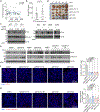


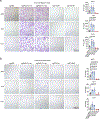
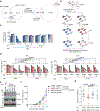

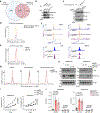

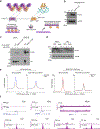
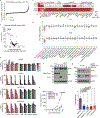
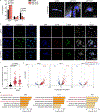
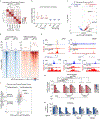
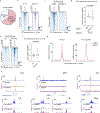

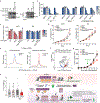
Comment in
-
Oncogenic role for an EWS-FLI1 suppressor.Nat Cell Biol. 2023 Feb;25(2):214-216. doi: 10.1038/s41556-022-01067-8. Nat Cell Biol. 2023. PMID: 36658218 No abstract available.
References
-
- Ewing J Diffuse endothelioma of bone. Ca Cancer J Clin 22, 95–98 (1972). - PubMed
-
- Grünewald TGP et al. Ewing sarcoma. Nat Rev Dis Primers 4, 5 (2018). - PubMed
-
- Stahl M et al. Risk of recurrence and survival after relapse in patients with Ewing sarcoma. Pediatr Blood Cancer 57, 549–553 (2011). - PubMed
-
- Gaspar N et al. Ewing Sarcoma: Current Management and Future Approaches Through Collaboration. J Clin Oncol 33, 3036–3046 (2015). - PubMed
-
- Zucman J et al. Cloning and characterization of the Ewing’s sarcoma and peripheral neuroepithelioma t(11;22) translocation breakpoints. Genes Chromosomes Cancer 5, 271–277 (1992). - PubMed
Publication types
MeSH terms
Substances
Grants and funding
LinkOut - more resources
Full Text Sources
Research Materials

